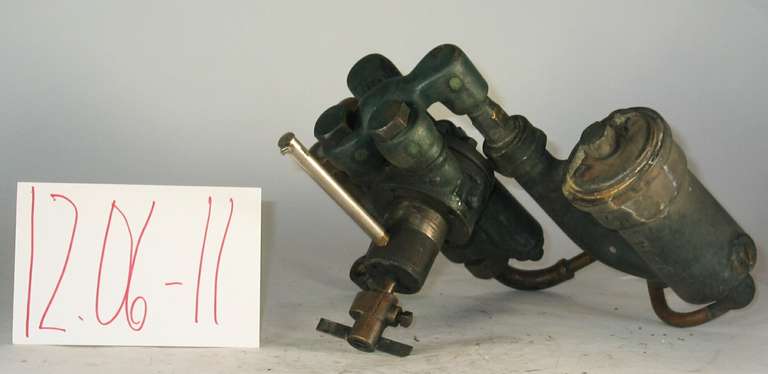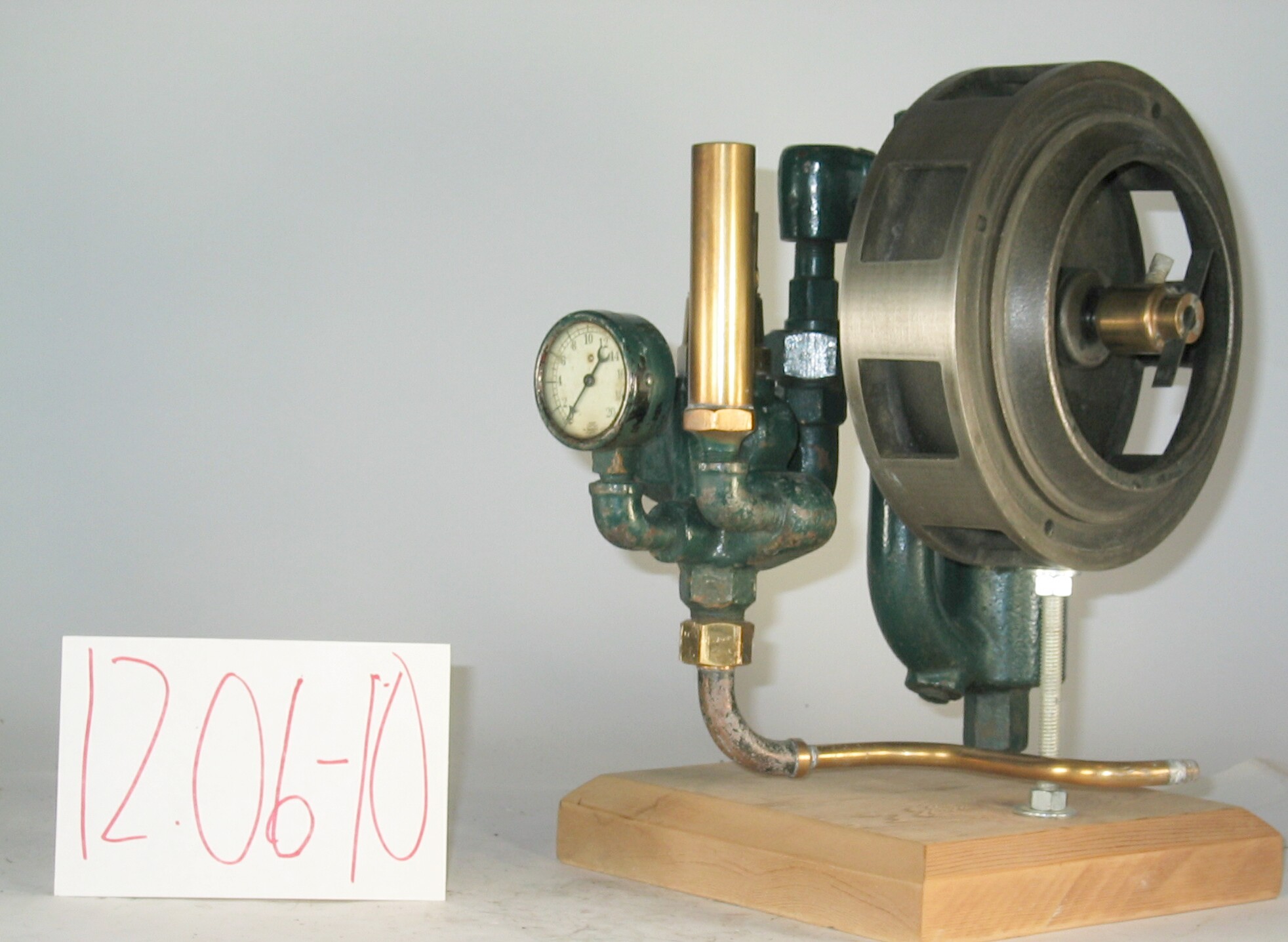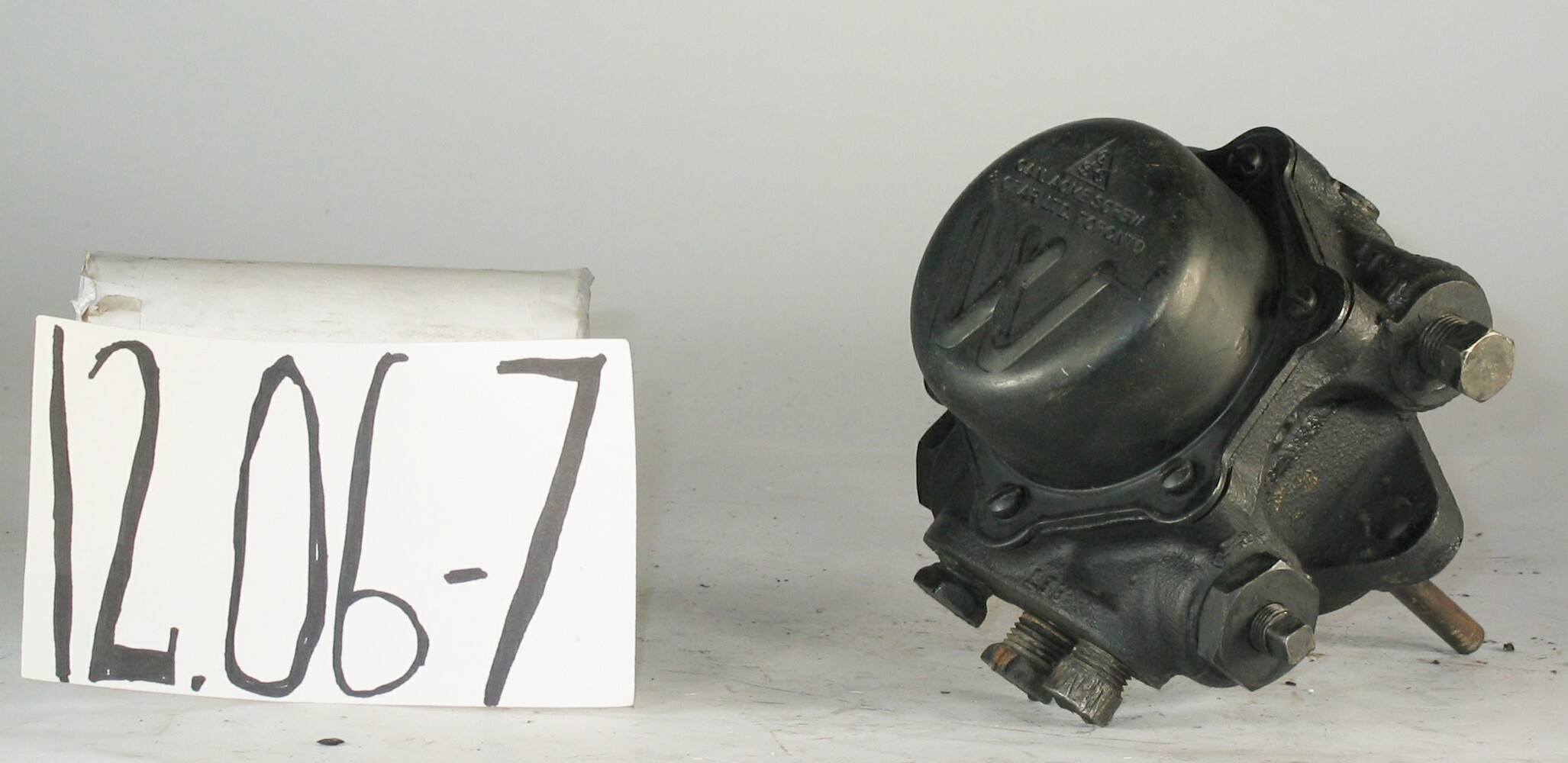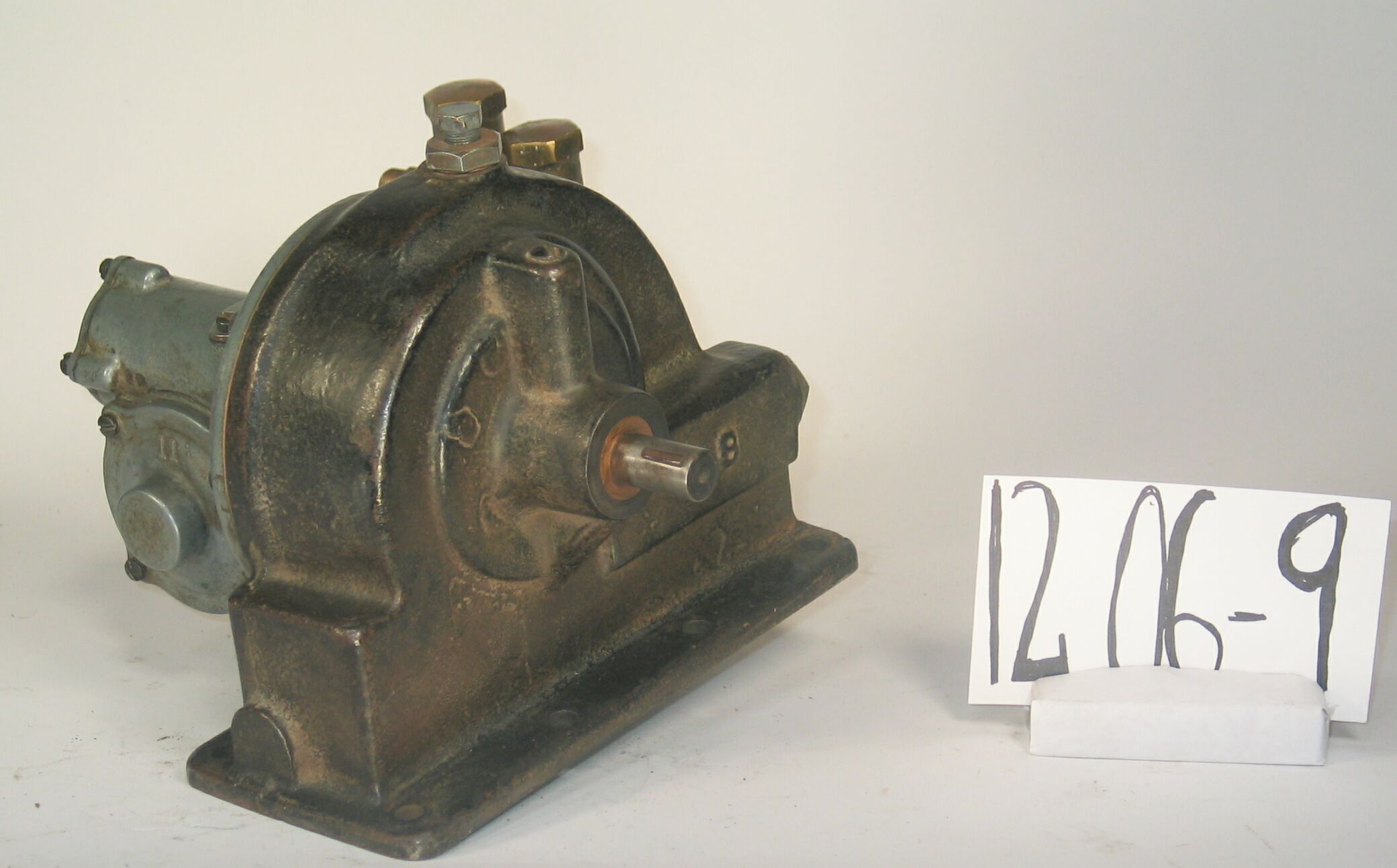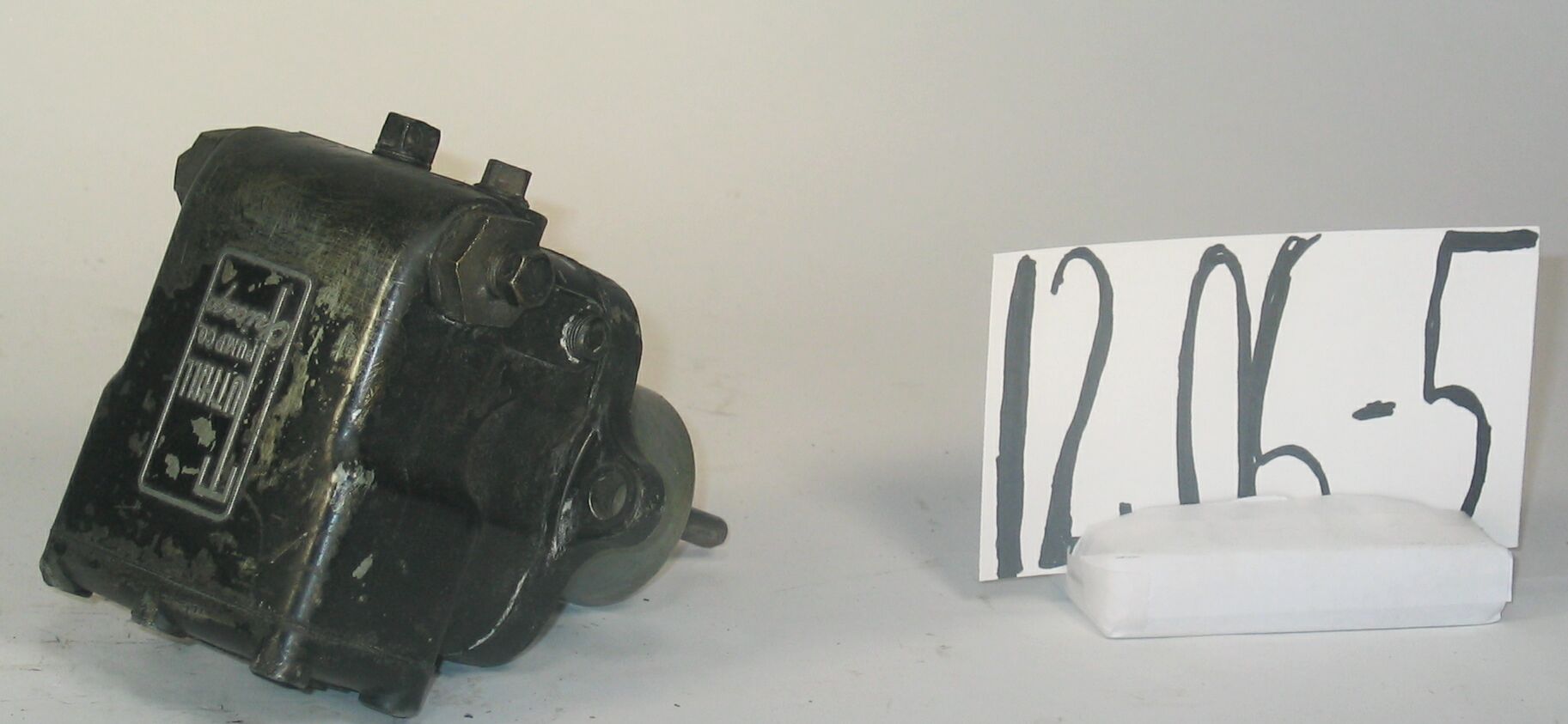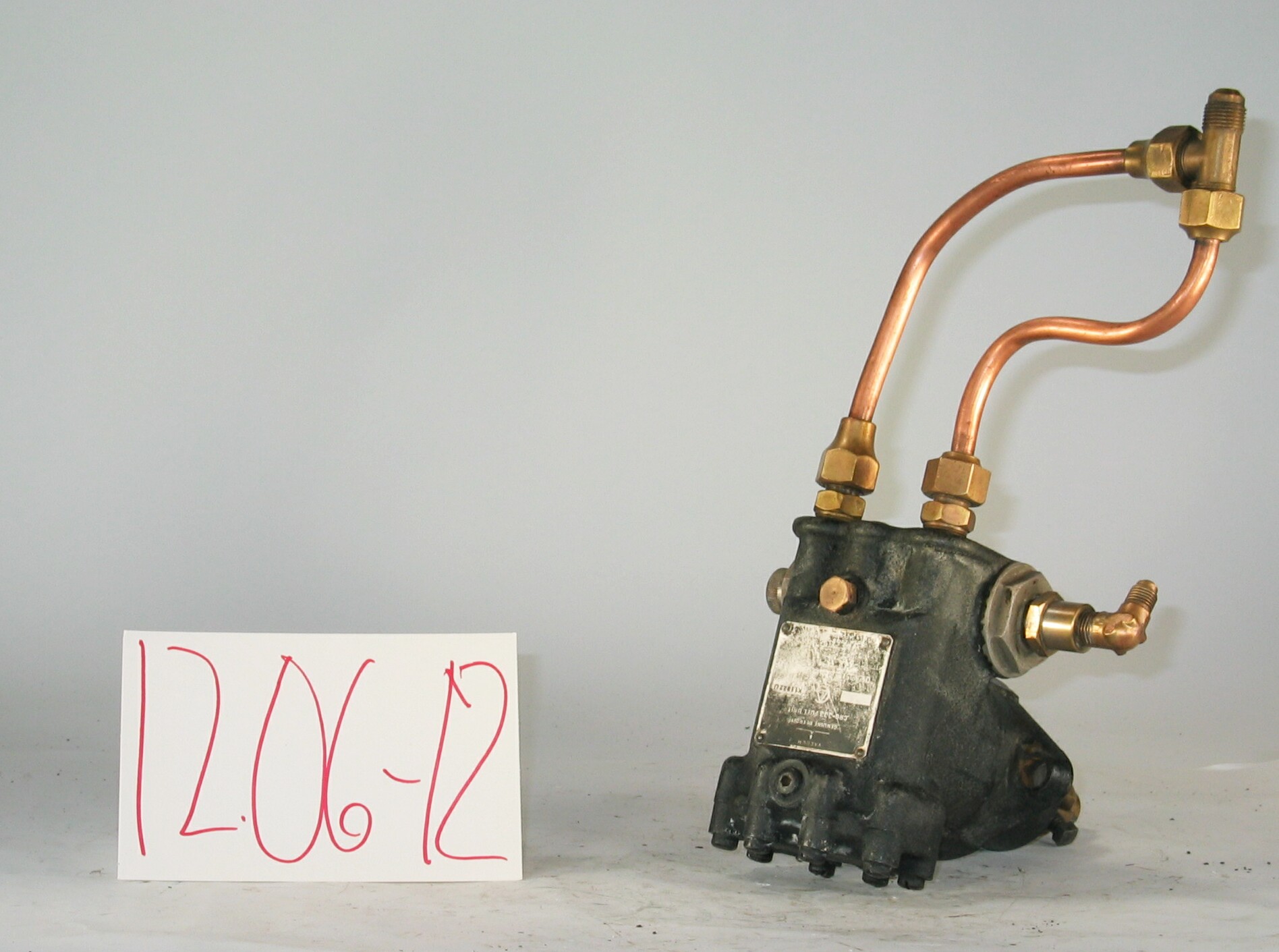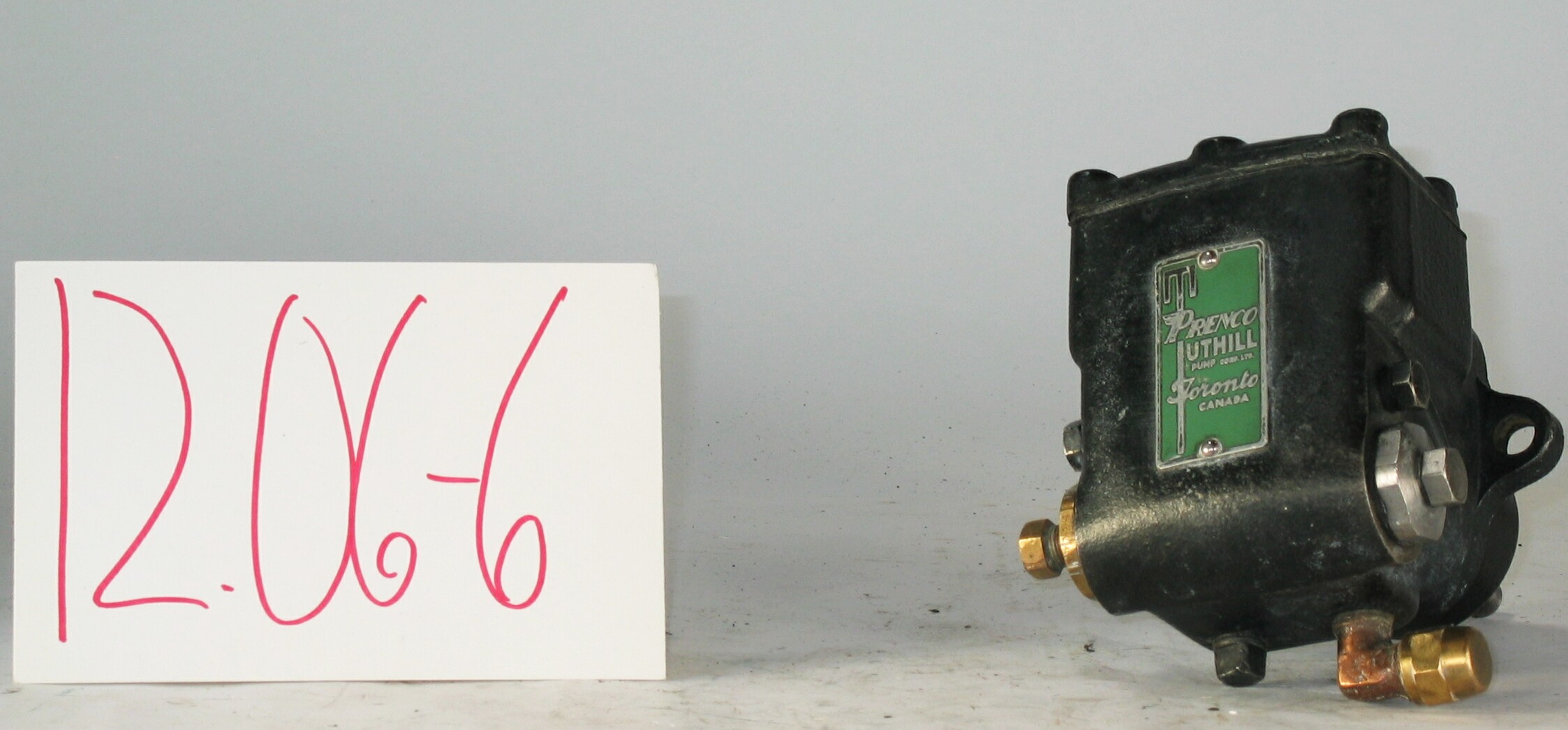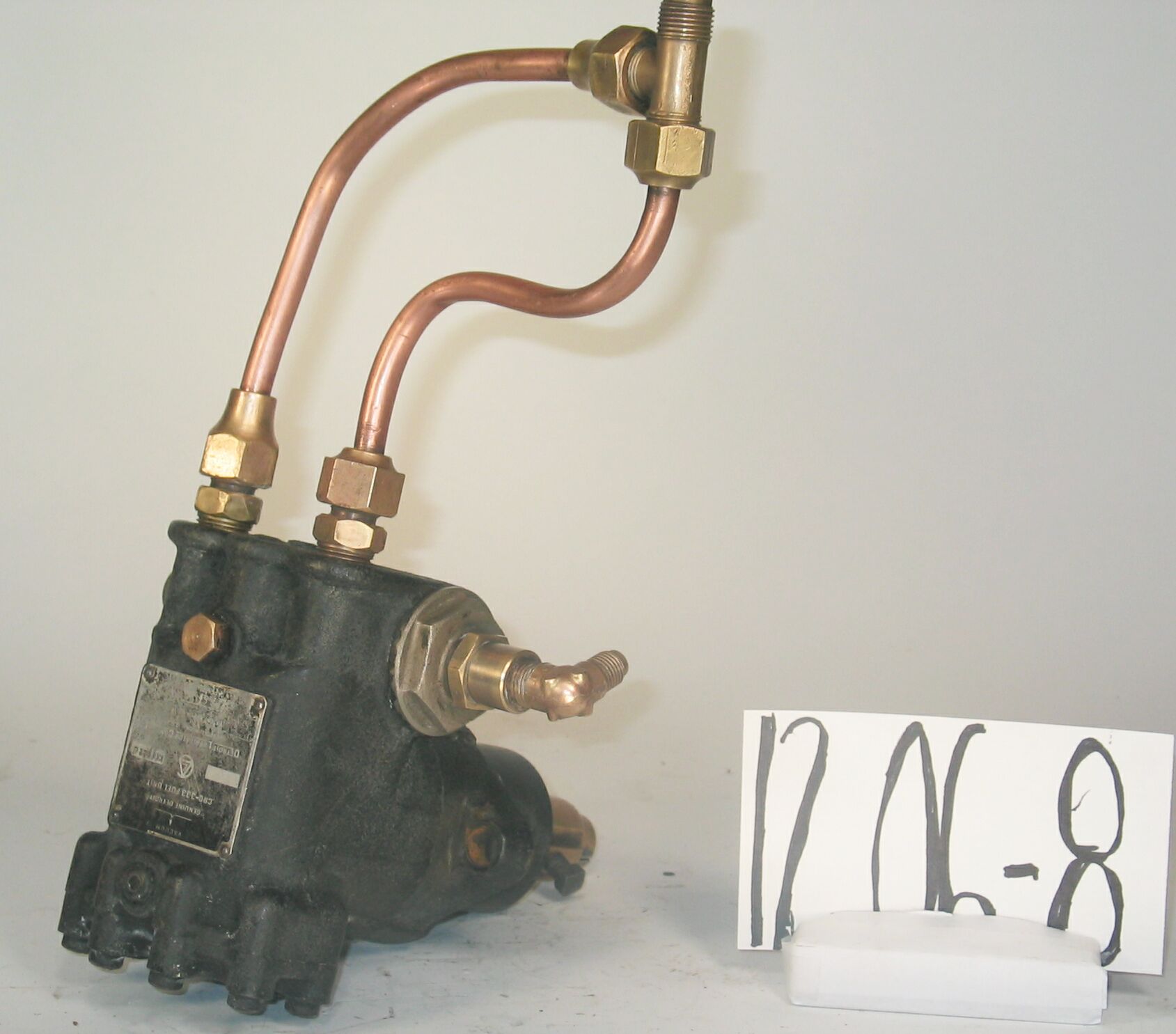12.06-11: Fess 1930 Fuel Pump Assembly for Gun Type Oil Burner
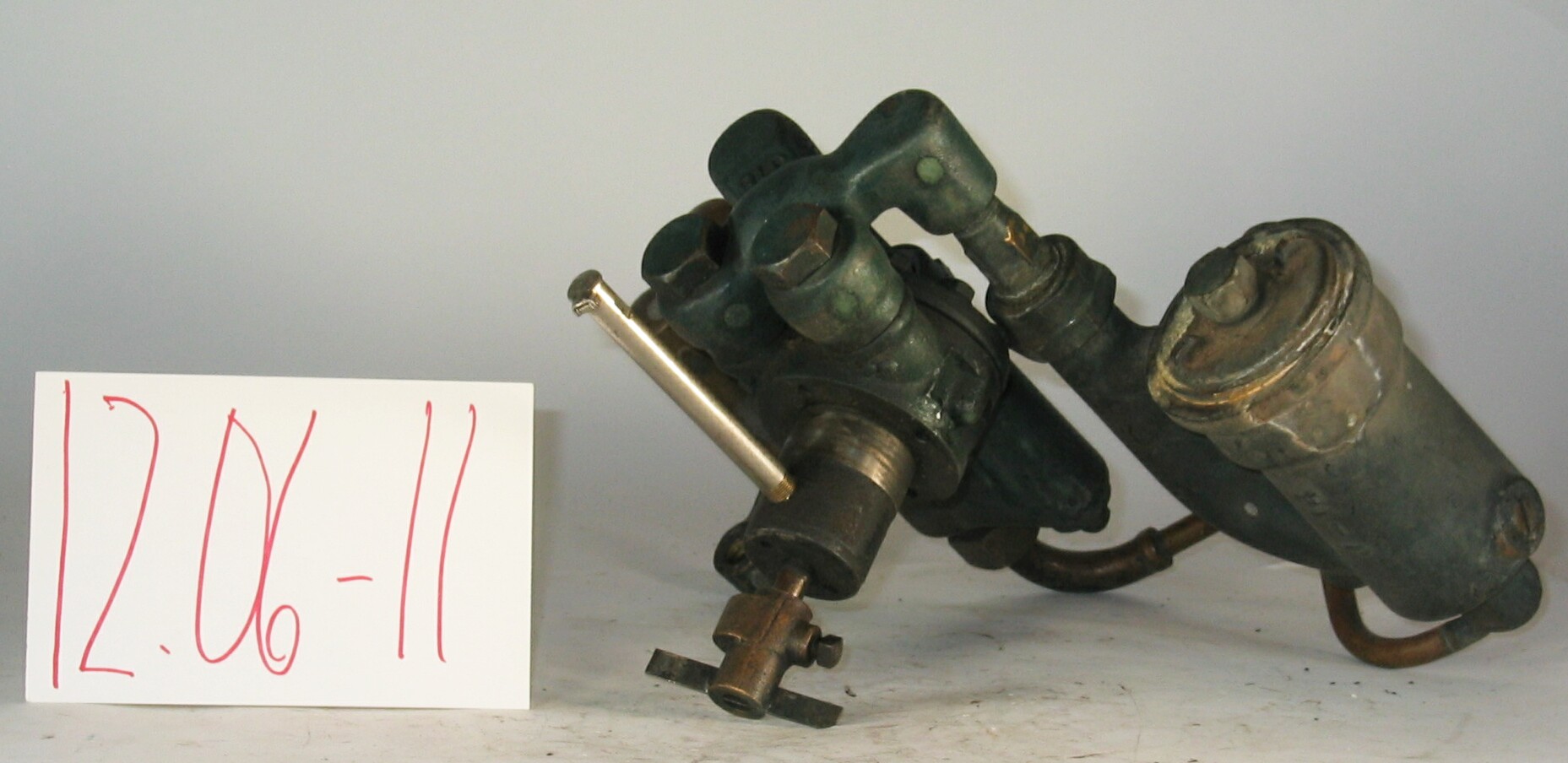
| HHCC Accession No. 2006.152 | HHCC Classification Code: 12.06-11 |
|---|
Description:
A compact, functionally integrated fuel pump assembly for gun type, low pressure atomizing oil burner, equipped with Tuthill fuel oil pump, drive coupling, pressure regulating valve, fitments, and oil filter all executed in solid brass/bronze, , Fess, Model J18, Circa 1930, partial assembly only [see also 12.06-10, ID#267]
Group:
12.06 Pressure Atomizing Oil Burner Equipment and Systems - Fuel Pump Assemblies
Make:
Fess
Manufacturer:
Fess Oil Burner of Canada
Model:
J18
Serial No.:
Size:
13 x 19 x 12 inch h
Weight:
18 lbs.
Circa:
1930
Rating:
Eeducation, and research quality, illustrating the engineering and design of compact, advanced, functionally integrated fuel oil pump assemblies for low pressure atomizing technology [partial assembly]
Patent Date/Number:
Provenance:
From York County (York Region) Ontario, once a rich agricultural hinterlands, attracting early settlement in the last years of the 18th century. Located on the north slopes of the Oak Ridges Moraine, within 20 miles of Toronto, the County would also attract early ex-urban development, to be come a wealthy market place for the emerging household and consumer technologies of the early and mid 20th century.
This artifact was discovered in the 1950’s in the used stock of T. H. Oliver, Refrigeration and Electric Sales and Service, Aurora, Ontario, an early worker in the field of agricultural, industrial and consumer technology.
This assembly was used in York County [York Region] north of Toronto in the 1930’s
Type and Design:
Compact, fully integrated fuel pump assembly Designed for gun type, low pressure atomizing oil burner, Tuthill, low pressure, single stage gear pump, Equipped with drive coupling, pressure regulating valve, fitments, and oil filter all executed in solid brass.
Construction:
Material:
Special Features:
Accessories:
Capacities:
Performance Characteristics:
Operation:
Control and Regulation:
Targeted Market Segment:
Consumer Acceptance:
Merchandising:
Market Price:
Technological Significance:
By the early 1930’s the Canadian oil heating industry was progressing well beyond simple, gravity feed, vaporizing oil-heating equipment [see Group 11,05 artifacts]. Having developed mechanical, low pressure atomizing machinery [see ID# 12.06-9], it was ready to move on to more efficient, cleaner and more reliable atomizing methods, to be found in the pressure-atomizing “gun” burner technology of the period. This historic artifact models well the sophisticated engineering and design achievements of the period, in compact, functionally integrated fuel oil pump assemblies for low pressure atomizing oil burners. Modelled here is the best of the offerings of the industry to Canadian home owners of the period ‘ at least to those that could afford the best and the latest is advanced automatic home heating technology in the early 1930 ‘ in the midst of national economic depression. A superb example of what was now possible, given the advances in oil atomizing technology, metallurgy, manufacturing and fabrication methods of the day. Exemplified, too, is a new era of industrial craftsmanship with an eye for a new of eye-catching and pleasing industrial styling. Seen here is a new generation of mechanical equipment, targeted on the hearts and minds of the Canadian homeowner, equipment which was starting to loose the crude industrial machinery look, and develop a new aesthetic, one distancing its self from the factory floor look of a few years earlier [see 12.06-9]. What had been acquired by the industry was a new sense of how to smoothly integrate and articulate mechanisms traditionally of widely different functions [oil pumps, motors, fans and pressure valves] into a single functioning whole. A new kind of sophisticated entity had been created, one made all the more appealing to the early 20th century discriminating homeowner of good taste with the addition of polished brass fitments. See Note #2 The new gun style burner consisted of a direct drive, flange mounted motor, a Sirocco type high pressure fan to deliver primary air for combustion, a compact positive displacement, gear pump, an oil atomizing nozzle, high potential electrical transformer, and ignition electrodes..
Industrial Significance:
Fess Oil Burners of Canada [later the John Wood Company, Toronto] became a major player in the development of the automatic oil heating industry, starting in the late 1920’s Capitalizing on the sales potential of the new more compact and reliable ‘gun’ type technology, the Fess J series of automatic oil burners would be representative of a new generation of highly innovative equipment, taking advantage of the newly emerging Canadian market in the early 1930’s. Its Model J series of gun type, pressure atomizing burners, in their characteristic black-green, would be a familiar site in the basements of the well-to-do across much of central Canada in the 30’s. The industry was moving to more compact, functionally integrated, unitary equipment configurations, away from the industrial machinery look. With the advent of the high pressure gun burner, the basic oil burner configuration had been established which, with many modifications and enhancements, would largely characterize the field through to the end of the 20th century.
Socio-economic Significance:
The public’s desire for relief from the hardships of the period and its increasing desire for comfort were cards that were well played by the oil heating industry of the times, justifying significant new engineering and capital investment in the development of oil heat technology an manufacturing capacity throughout the 1930’s. The high pressure, gun oil burner would soon become a commonplace in urban Canada, although much of rural Canada would wait another 30 years or more, for the benefits of home and farm electrification, necessary as a basic prerequisite for such modern comforts.
Socio-cultural Significance:
In spite of an inherently cautious Canadian public and its attitude towards new fangled, electro-mechanical contraptions in the early years of the 20th century, consumer interest in automatic oil heating equipment for the home grew surprisingly rapidly - amongst those that could afford to aspire to such luxuries in a period of national economic depression. Household machines, refrigerators and oil burners in the basement, would be the “show and tell” subjects of the day for many upper-middle class homeowner, those with interests in ‘conspicuous wealth’, anxious and willing to demonstrate their latest life style purchases. The master narrative told here, the one to which almost all others relate, is that of the emergence of ‘machinery in the Canadian home’. As the 20th century dawned, Canadians, accustomed to their resource-based, extractive economy were used to transportation, traction and motive power machines in farm, mill and factory, where they seemed to rightfully belong. With the 1920’s, however, all that was about to change ‘ and change dramatically Here-to-for, the familiar motive power, rotating machines of farm, mill and factory were driven by central station power plants, water, steam and later internal combustion engines. But it was with the advent of motive power packaged in unitary, moveable forms, as in the ‘stationary’, gasoline engine [explosion engine] and the electric motor that a new era in motive power was made possible for home, as well as for farm, mill and factory applications It was principally the fractional horsepower, single phase, induction electric motor [see note #1] that made possible the introduction of machinery into the home, and with it ‘the end of quiet’ [see historical artifacts Classification Group 16,00, see Reference #1].
With the introduction of self powered machines into the home also came the introduction of automated, self regulating machinery, machinery that would turn iteself on and off, without the touch of human hand - the refrigerator, oil burner and water pump. These automated, inanimate objects also introduced new rhythms into the home, each with its distinctive hum and beat, each coming on and off with its own unique operating rhythm. The aroma of oils, vapours and materials, once foreign in the household, would also fallow. The 20th century ‘electro- mechanical’ Canadian home had arrived, much the same as the digital Canadian home would arrive in little more than half a century later ‘ changing all. The consequences were profound, spelled out in terms of the social, cultural and economic changes wrought.
Donor:
G. Leslie Oliver, The T. H. Oliver HVACR Collection
HHCC Storage Location:
Tracking:
Bibliographic References:
- Instructions for Installation, Fess Automatic Oil Burners, TypyJR, TypeF, DA, DS, DAE, D3, BI, Fess Oil Burners of Canada Limited, Toronto, undated
- Fractional Horsepower Electric Motors, Cyril Veinott, McGraw-Hill, New York, 1948
Notes:
- Advocates of gasoline, internal combustion technology where strong advocates for its use in the home, predicting a rosy future in the mid 1920’s, See Putman’literature T. H. Oliver auto electric trade collection.
For examples further advances in functional integration see subsequent entries in Group 12.06; see also Fess oil burner, Group 12.01 For an account of the construction, operation, installation and servicing of fuel oil pump assemblies see ‘Better Oilheating, A service Guide, Operation and Maintenance of Oil Burners, Second Edition, 1959, Fueloil and Heat, N.Y.
Related Reports:
Further conservation work required to prepare for exhibit
